Editorial: VietNamNet respectfully introduces the second part of the conversation with Party Central Committee member, Vice Chairman of the National Committee on Digital Transformation, Minister of Information and Communications Nguyen Manh Hung about the core viewpoints, ideas, unique approaches and breakthrough, revolutionary solutions of Resolution 57 issued by the Politburo.
Consider institutions as competitive advantages
Resolution 57 emphasizes the need for focused and key investments. Could you please tell us what needs to be focused on in the coming time?
"We need to legalize and institutionalize new things so that those who do new things are safe and do not take risks. This must be basically resolved by 2025."
Minister Nguyen Manh Hung
Resolution 57 says that “the bottleneck of bottlenecks” is the institution. Therefore, the first thing that needs to be focused on and done as quickly as possible is the institution. We need to legislate and create institutions for new things so that those who do new things are safe and do not face risks. This must be basically resolved by 2025.
Even in terms of institutions, we also propose the view that institutions should be considered a competitive advantage. Currently, there are many things that new technology allows, but many countries are prohibiting them, so even if businesses are ready, they have no place to deploy them. By allowing a pilot in Vietnam, the entire world 's technology and resources will flow to Vietnam. They will innovate and develop in their own country, contributing to the development of Vietnam, and from here, go global. With this approach, Vietnam can become a global center for new technology.
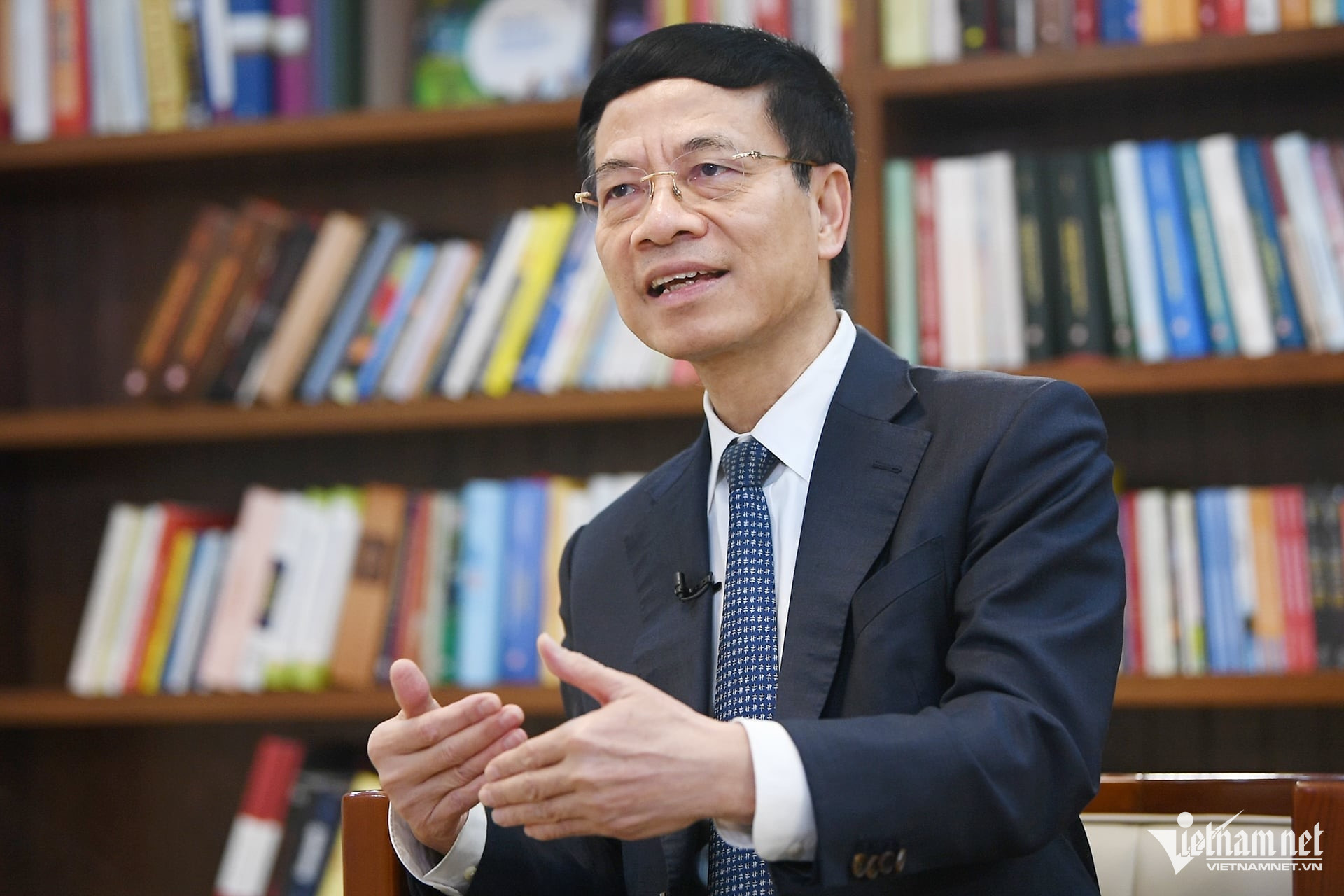
Minister Nguyen Manh Hung: The first thing that needs to be focused on and done as quickly as possible is the institution. Photo: Hoang Ha
Second, focus on developing infrastructure for science, technology, innovation and digital transformation (STI), with the requirement that infrastructure must go faster, twice as fast as economic development. Form large-scale corporations and enterprises with strong capacity to lead in infrastructure development, thereby creating power to go global.
Previously, we talked a lot about transport infrastructure and electricity infrastructure, but now, in Resolution 57, strategic infrastructure includes digital infrastructure, science and technology infrastructure and innovation. Now, after 20-30 years of being nurtured by the country, large corporations and enterprises need to take on national missions, be responsible to the country, and play a leading role in developing the country's strategic infrastructure.
"Human talent is the key factor for an organization or a country to develop, especially when we choose to develop the country quickly and sustainably based on science, technology and innovation."
Minister Nguyen Manh Hung
The third thing that needs to be focused on is human resource development. This factor has been mentioned many times, but this time Resolution 57 emphasizes talent. Human resources now are no longer general human resources but talented people; now competition is competition for talent, not competition for human resources. Talent is the key factor for an organization and a country to develop, especially when we choose to develop the country quickly and sustainably based on science, technology and innovation.
We Vietnamese are smart, adapt quickly to change, and have the ability to tailor products to individual needs. There are many Vietnamese people abroad who have become famous in technology. It is time to return to Vietnam or connect with Vietnam to build Vietnamese technology businesses.
It is important to remember that talent is global in nature; therefore, Vietnam needs to create conditions for global talent to converge here, allowing the testing of new technologies and new business models, with a Sandbox approach, accepting risks: What is not yet known how to manage will be allowed to be tested in a limited space and time. "Technology special zones", "Innovation special zones", with the connotation of being a place to test superior mechanisms for technology businesses. For talented people, their first need is to be creative, to have challenges, and the bigger the challenge, the more attractive they will be.

According to Minister Nguyen Manh Hung, large corporations and enterprises need to be responsible to the nation and play a leading role in developing the country's strategic infrastructure. Photo: FPT
Resolution 57 also emphasizes data - a new type of resource created by humans in the development process, also a new type of means of production, a new resource. We need to focus on creating markets; building institutions to be able to manage and divide the value created by this new type of resource.
Research and development of strategic technologies is also one of the five key and core contents. With Resolution 57, for the first time, strategic technology is ranked as one of the important forces. If we want to develop quickly and sustainably, if we want to bring the country to a new level, we must master tools and technologies, especially strategic technologies.
In addition, Resolution 57 also clearly states that technology is mainly for businesses and strategic technology is focused on large businesses. Therefore, Vietnamese technology businesses, especially large businesses, must take on the Vietnamese mission, master strategic technologies to master the digital transformation process in Vietnam.
Taking risks in scientific research
According to the Minister, is there any way for us to build infrastructure for science and technology, innovation and digital transformation, without spending too many state resources?
When identifying science and technology, innovation and digital transformation as the pillars and foundations for national development in the new era, we need to build infrastructure for them. Only then can these three industries develop strongly and sustainably.
Resolution 57 has emphasized the need for focused and key investments. We need to change our approach; with the same amount of money, infrastructure investment will have breakthrough developments. Specifically, with 2% of the state budget still spent on science, technology and innovation (equivalent to about 40,000 billion VND), instead of dividing it among many focal points, if investment is concentrated in a few key areas and shared, the difficult problem will become a feasible problem.
Resolution 57 clearly states: Allocate at least 3% of the total annual budget for the development of science and technology, innovation, and national digital transformation, and gradually increase it according to development requirements. The important point is that with this 3% budget, investment in science and technology and digital transformation, research and application can be "flexible"; when it is necessary to focus on digital transformation, more can be spent on it, and conversely, when it is necessary to prioritize research, a larger portion of the budget will be allocated for this activity.
On the other hand, in the capital structure for infrastructure investment or other areas of science and technology, innovation and digital transformation, state capital should only be "seed capital" accounting for about 20%, the important thing is to mobilize 80% of investment from the private sector. I think that to attract the community and society to join hands in developing science and technology in the country, the role of the press and media is important.
"Ten projects, 10 good things, 3 do not achieve the desired results, no cheating, no corruption, adding up the good things, the final result is good."
Minister Nguyen Manh Hung
The press and media need to "inspire" into all Vietnamese people and businesses an awareness and belief in the need to apply science and technology, have new ideas, and innovate management methods for businesses to develop and increase profits. When people and businesses see the results and effectiveness of applying science and technology, they will continue to increase investment. Thus, just 3% of the state budget will promote and create a larger market for Vietnamese technology businesses and can attract 3% of GDP for science and technology, innovation and digital transformation.
With the risks in research and technology development, what is the solution proposed in Resolution 57, Minister?
The change in thinking and perception in Resolution 57 is one of the important spirits, including the story of accepting risks and delayed research. Resolution 57 also puts forward the spirit of resolutely abandoning the mindset of banning if you can't manage it; and puts forward the viewpoint on institutionalization, which is: Institutions must keep up with development and create development. This is also a very strong and new mindset of Resolution 57.
Conduct research through a fund model, meaning the fund can spend on many different research projects, some of which are successful and some of which are failures, but as long as the total is positive, that's fine.
In general, investment, scientific research, technology development and innovation are about accepting risks and evaluating effectiveness in a comprehensive way. Ten projects, 10 good things, 3 do not achieve the desired results, no cheating, no corruption, adding up all the good things, the final result is good.
Make in Vietnam means self-reliance and technological self-reliance
What role will the private business sector play in implementing Resolution 57, Minister?
Resolution 57, when it comes to enterprises, makes absolutely no distinction between private and state-owned enterprises. The Resolution determines that core technology enterprises, regardless of private or state-owned, will be assigned the task of mastering strategic technologies as well as implementing key national projects on digital transformation.
On January 15, the 6th National Forum on Developing Vietnamese Digital Technology Enterprises with the theme “Mastering digital technology, mastering the digital transformation process in Vietnam with Vietnamese digital technology enterprises”, also known as the Make in Vietnam forum , was organized by the Ministry of Information and Communications. General Secretary To Lam attended and gave a speech, giving instructions and assigning tasks to the Vietnamese digital technology enterprise community.
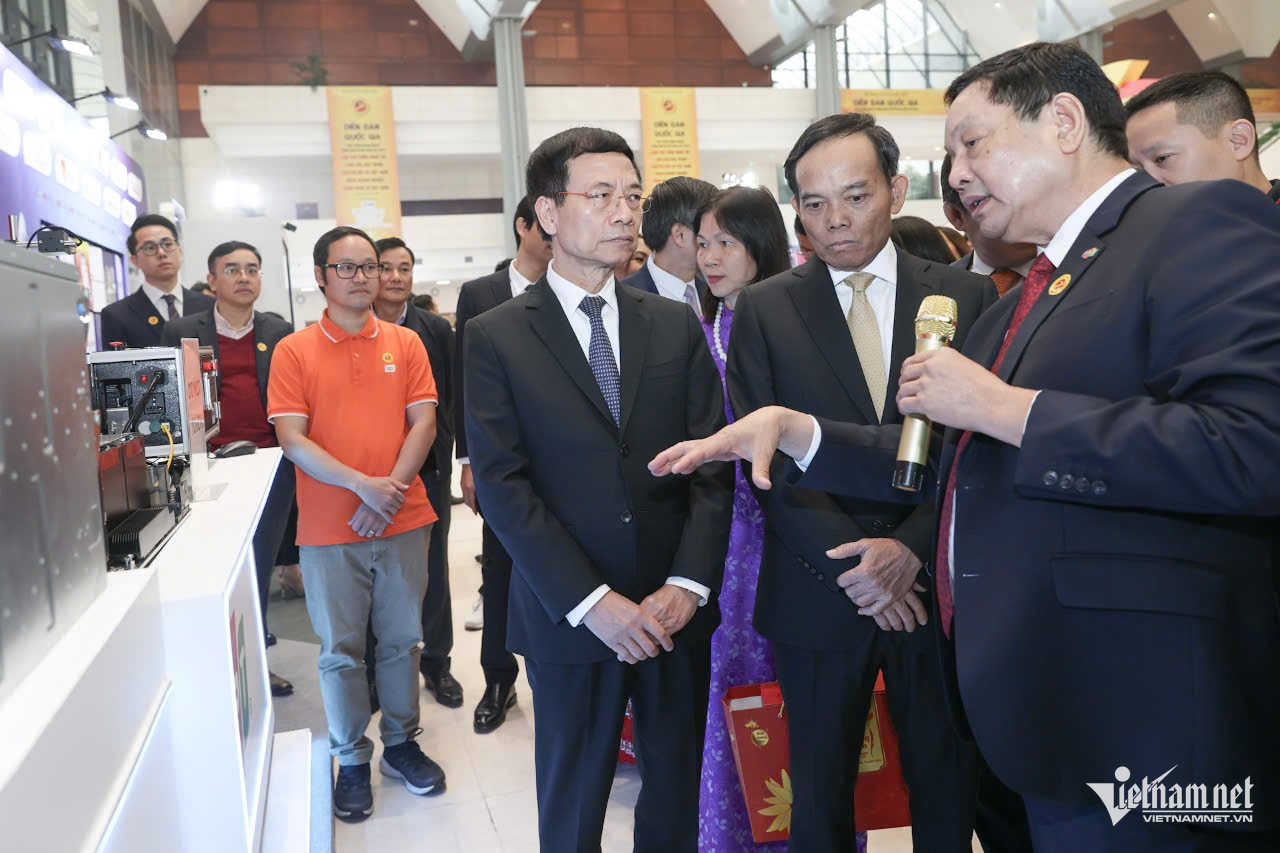
Head of the Central Economic Commission Tran Luu Quang and Minister of Information and Communications Nguyen Manh Hung visit exhibition booths at the 6th Make in Vietnam Forum. Photo: AD.
The forum conveyed strong messages: Self-reliance, technological autonomy and the development of strategic and core technologies are the foundation for building an independent and autonomous economy; Vietnamese digital technology enterprises must take advantage of their strengths in intelligence, human resources, creative entrepreneurial spirit, and Vietnamese spirit to contribute to the strong development of the country in the new era; Vietnamese technology enterprises, especially large enterprises, must accept the Vietnamese mission and make Vietnam famous...
Notably, at this Make in Vietnam forum, large enterprises, regardless of private or state, including Viettel, VNPT, FPT, CMC, MISA, One Mount and HDBank have officially registered to master specific core technologies, such as 5G, 6G network technology; semiconductor chips; Blockchain; GenAI; Cloud... This is the first "shot" to implement Resolution 57.
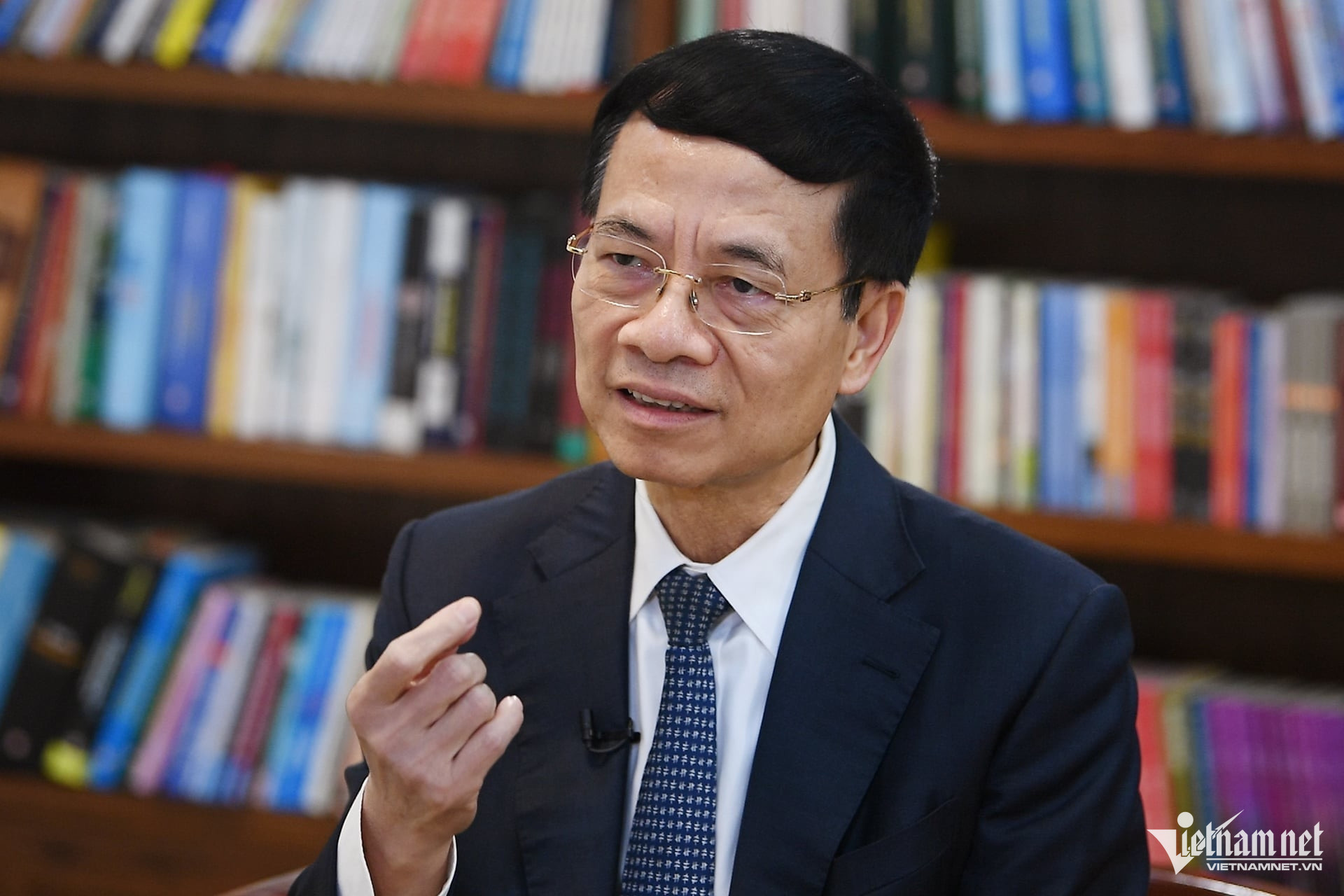
Minister Nguyen Manh Hung emphasized: "Vietnamese technology enterprises, especially large enterprises, must accept the Vietnamese mission and make Vietnam famous." Photo: Hoang Ha
Resolution 57 also mentions the public-private partnership model, in the sense of cooperating with businesses in building digital infrastructure, building key national labs, and developing technologies and applications.
With state-owned enterprises, our wish is that this group of enterprises will take the lead in digital transformation to set an example and lead other enterprises.
"The State will support not only small and medium enterprises, but also business households, farming households, and digital transformation cooperatives."
Minister Nguyen Manh Hung
Three clear benefits of requiring state-owned enterprises to pioneer internal digital transformation within their units are to help the enterprises themselves manage better, make their operations transparent, and avoid accidents such as embezzlement and corruption; state-owned enterprises are large enterprises, accounting for 30% of the economy, so when this group of enterprises spends on digital transformation, it will create a digital transformation market; state-owned enterprises do it, go first, and create efficiency, which will set an example for other enterprises to follow.
For small and medium-sized enterprises not in the technology sector, the State will have a program to support this group of enterprises in digital transformation. Currently, to digitalize, small and medium-sized enterprises have to pay for it themselves, but in the future, they will receive support from the State. The support method can be in the form of money for them to buy services from technology enterprises; or the State buys services from technology enterprises, creating platforms for small and medium-sized enterprises to use for free.
When making the action program, we added the support objects to 5 million business households, farming households and cooperatives. Thus, the State will support not only small and medium enterprises, but also business households, farming households and digital transformation cooperatives.

Implementing Resolution 57, the State will support not only small and medium enterprises, but also business households, farming households, and digital transformation cooperatives. Illustration photo: QB
Another point, businesses also benefit, is that when the state invests in developing science and technology infrastructure, such as research labs, private businesses are also allowed to use it. This is a very new point in the action program.
Resolution 10 allocates land to farmers, Resolution 57 assigns strategic technology research tasks to large enterprises. So what benefits will small and medium technology enterprises get from Resolution 57, Minister?
When it comes to scientific research, we are referring to scientists and we have solved this by supporting them with funding and infrastructure for research. When it comes to technology, large enterprises are assigned strategic technology, regardless of whether they are private or state-owned.
Particularly for small and medium technology enterprises, this group enjoys two benefits:
Firstly, when large enterprises master strategic technology by assigning tasks and using a part of the state budget, the results will have to be partially opened to small and medium enterprises. Partially opened means that small and medium enterprises will not have to research or invest but will enjoy the results and technology to develop.
We can also ask large enterprises to open up by creating technology platforms, turning technology into services to provide at low prices to small and medium technology enterprises. For example, the unit responsible for mastering AI technology will turn AI technology into AI services so that small and medium technology enterprises do not have to invest 100 billion VND to develop technology, but will buy services from large enterprises for 500,000 VND/month and develop applications based on that technology.
Second, Resolution 57 clearly stated that the State, when making public procurements, will prioritize purchasing products and solutions developed by Vietnamese enterprises. Small and medium-sized enterprises are the group that creates many applications, benefits from public procurement regulations and grows from there.
"If we want to bring digital transformation and the application of science and technology into a national revolution, no one can do it except small and medium-sized technology enterprises, not Viettel or FPT."
Minister Nguyen Manh Hung
However, I believe that the biggest benefit is the spirit of innovation, digital transformation, and technology consumption of Resolution 57, which will create an extremely large market for small and medium-sized digital technology businesses.
We have set a target that by 2030 Vietnam will develop at least 100,000 digital technology enterprises, focusing on four types of enterprises: large enterprises investing in core technology research; IT enterprises mastering digital transformation technology; enterprises developing digital transformation applications; and enterprises implementing digital transformation. Of these, the majority are small-scale digital transformation enterprises.
For example, when needing to install irrigation systems or measure pests, farmers only need to hire small businesses. At that time, if all businesses and farmers apply digital technology, small and medium technology businesses will have more work, thereby gradually growing.
If we want to bring digital transformation and the application of science and technology into a national revolution, no one can do it except small and medium technology enterprises, not Viettel or FPT.

Minister Nguyen Manh Hung said: The biggest benefit is the spirit of innovation, digital transformation, and technology consumption of Resolution 57, which will create an extremely large market for digital technology businesses. Illustration photo: MH
Currently, the reason why many large enterprises still do small things is because they do not have big things to do. With Resolution 57, when they are assigned big tasks such as researching and mastering AI technology, they will no longer have the time or human resources to do small things such as installing irrigation systems. Only then will large enterprises give up their "land" to small units.
Therefore, the State allocates different areas and places for different groups of businesses so that the units can create markets for each other. Large businesses have a lot of work to do, are prestigious, sign many contracts, and do not want to increase their staff, but tend to hire small businesses to do it. This is an ecosystem, interconnected and everyone benefits.
The Minister has repeatedly emphasized that Vietnam cannot become a developed country without the spirit of “self-reliance, self-strengthening, self-control, self-confidence, and pride”. So how can we stimulate these “self” words?
One way to stimulate is to look at Vietnamese history, through retelling stories in the history of the nation. The word “self” appears a lot in Vietnamese history, especially stories of liberation struggles, against foreign invaders and this spirit can be applied to the present.
"Make in Vietnam is a slogan. Make in Vietnam is a slogan of action. Make in Vietnam is a spirit. A spirit of self-reliance. A spirit of mastering applications and mastering technology."
Minister Nguyen Manh Hung
The Vietnam International Defense Exhibition 2024 at the end of December 2024 also demonstrated the spirit of the word "self", when for the first time we displayed a missile made by Vietnamese people, next to Russian missiles. When seeing a missile, a weapon symbolizing a military power, made by Vietnamese people, it will make people feel national pride, from which they will think about whether they can do such great things in their field of work.
In the digital technology industry, the word “self” also appears quite a lot. Two thousand Vietnamese digital technology enterprises with revenue from foreign markets are the spirit of the word “self”. Without confidence and technological autonomy, it will be impossible to compete abroad with the best enterprises in the world. Not only that, among the 2,000 Vietnamese digital technology enterprises that have gone abroad, there are units that have achieved revenue of more than 3 billion USD from foreign markets.
The spirit of Make in Vietnam is the spirit of the word “self” that was awakened 5 years ago. Make in Vietnam means creating in Vietnam, designing in Vietnam, making in Vietnam, manufacturing in Vietnam and by Vietnamese enterprises.
Make in Vietnam is a slogan for action. Make in Vietnam is a spirit. A spirit of self-reliance. A spirit of mastering applications and mastering technology. From mastering applications to mastering technology.
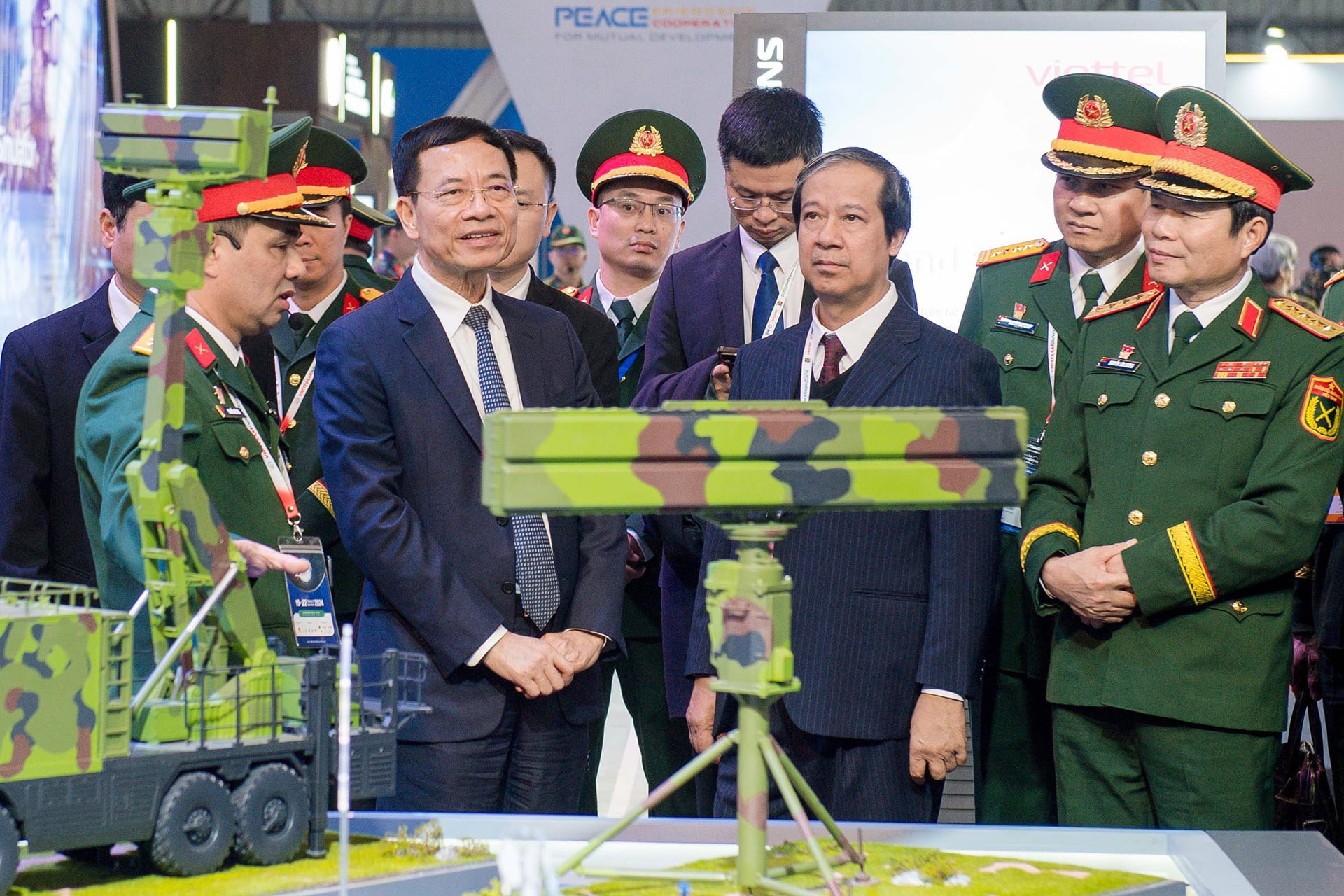
Minister Nguyen Manh Hung commented: Make in Vietnam will not only help Vietnam prosper but also help Vietnam have lasting peace. Photo: Viettel
Make in Vietnam will not only help Vietnam prosper but also help Vietnam have lasting peace, because it contributes to the development of a strong defense and security industry to protect Vietnam. The magic crossbow that protects Vietnam can only be made by Vietnamese people.
After 5 years, the proportion of Vietnam's value in the digital technology industry has increased from 21% to 32%. We aim for Vietnam's value to reach over 50% by 2030. This is a very high target to help Vietnam escape the outsourcing trap. Escaping the outsourcing trap is to escape the middle-income trap.
Also in the past 5 years, the number of Vietnamese public enterprises has increased by 50%. With 74,000 digital technology enterprises in a country of 100 million people, Vietnam is one of the countries with the highest rate of digital technology enterprises per capita among developing countries.
"Resolution 57 has conveyed the message of self-reliance, self-confidence, self-reliance, self-strengthening and national pride to promote Vietnamese intelligence."
Minister Nguyen Manh Hung
Make in Vietnam is also the pride of Vietnam. Resolution 57 has conveyed the message of self-reliance, self-confidence, self-reliance, self-strengthening and national pride to promote Vietnamese intelligence. Vietnam is no longer a small country, it must stand shoulder to shoulder with the world powers, and must contribute to the development of humanity.
Make in Vietnam is also the responsibility of Vietnam as a global nation and global citizen. That is, in addition to using and consuming human technology, Vietnam must also contribute to humanity, contribute to the technological development of humanity. Obviously, now the responsibility of domestic digital technology enterprises in Make in Vietnam must be stronger than ever.
According to the Minister, how can the press and media contribute to the successful implementation of Resolution 57?
If a country wants to develop, its spirit must go first, just like science and technology go first, twice as fast. Therefore, we must go first in the Vietnamese aspiration, the spirit of strength, the spirit of “self-reliance, self-reliance, self-control, self-confidence, pride”.
The mission of the media is to promote the spirit of "self-reliance", to help Vietnamese people and businesses realize the need to apply science, technology, innovation, and digital transformation.
The spirit of “contract 10” along with the core viewpoints, ideas, solutions and new approaches of Resolution 57 also need to be strongly spread throughout society. The spirit of Resolution 57 needs to be conveyed to create breakthrough development for many other sectors and fields, not just in science and technology, innovation and digital transformation.
Thank you, Minister!
Vietnamnet.vn



![[Photo] Prime Minister Pham Minh Chinh attends the 5th National Press Awards Ceremony on preventing and combating corruption, waste and negativity](https://vphoto.vietnam.vn/thumb/1200x675/vietnam/resource/IMAGE/2025/10/31/1761881588160_dsc-8359-jpg.webp)


![[Photo] Da Nang: Water gradually recedes, local authorities take advantage of the cleanup](https://vphoto.vietnam.vn/thumb/1200x675/vietnam/resource/IMAGE/2025/10/31/1761897188943_ndo_tr_2-jpg.webp)

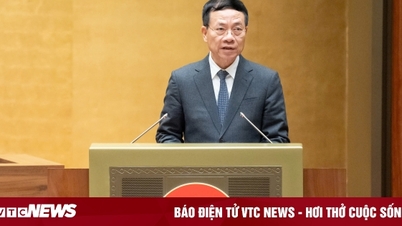

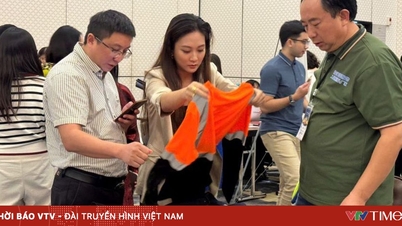



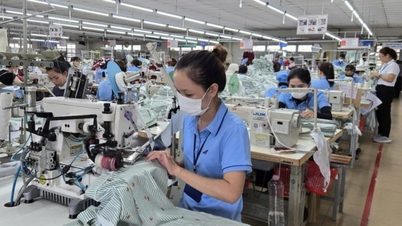

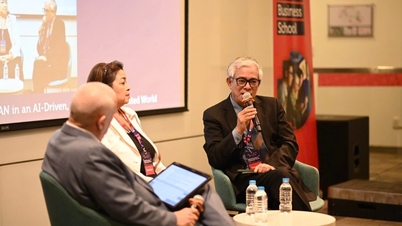




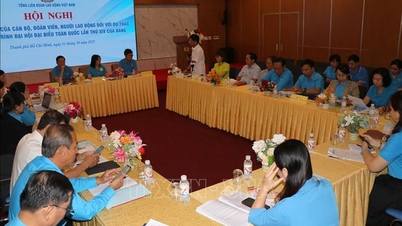
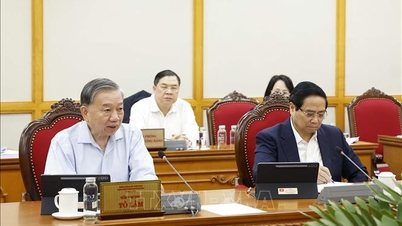
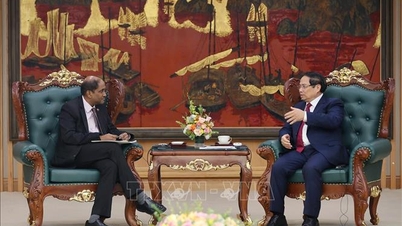
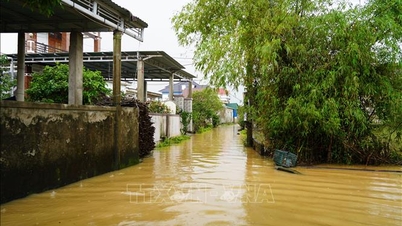

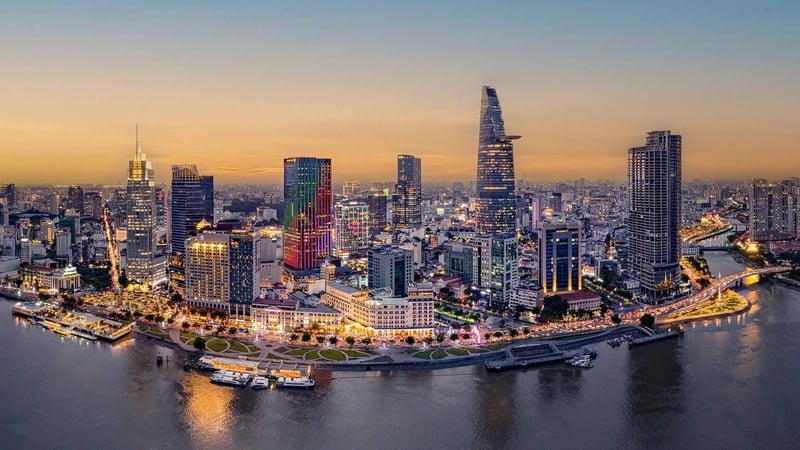




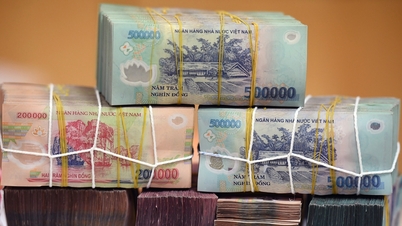



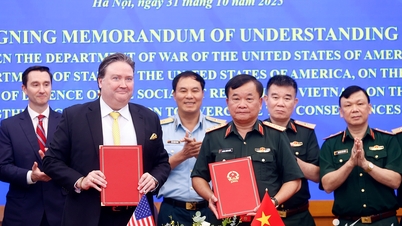


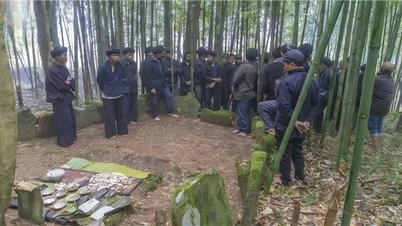















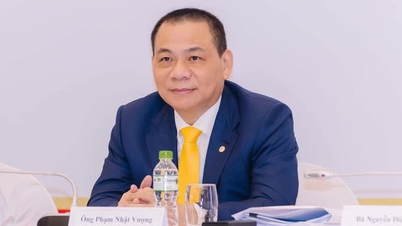

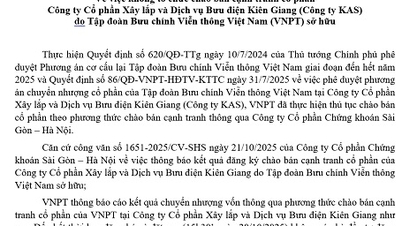


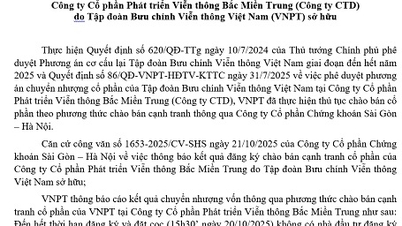
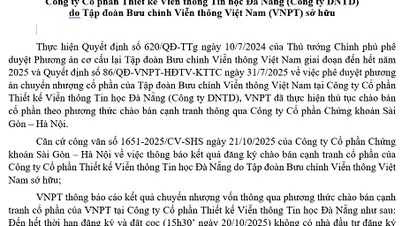







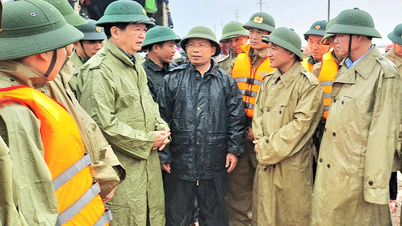




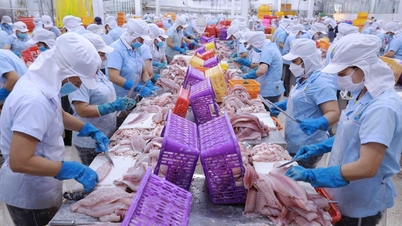

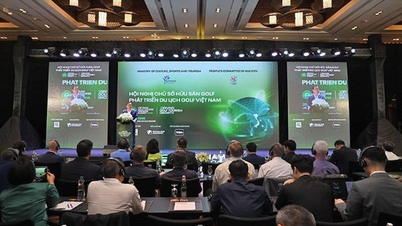

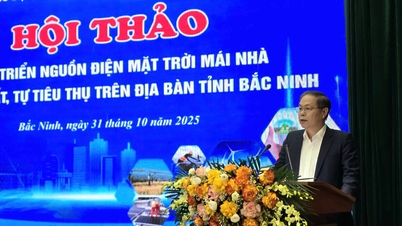
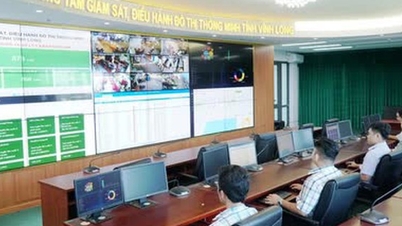

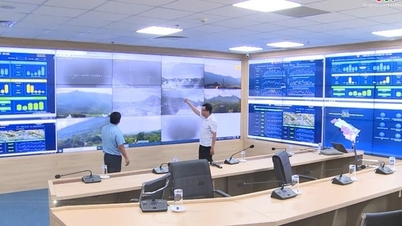




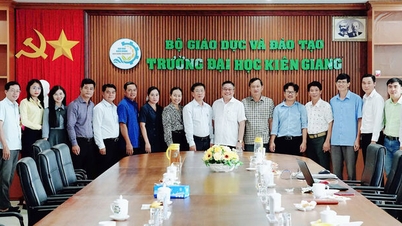
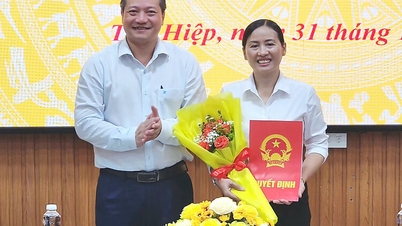



















Comment (0)